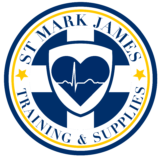WHMIS Training (Workplace Hazardous Materials Information System)
Overview
WHMIS training teaches workers how to recognize, handle, store, and use hazardous products safely in Canadian workplaces. The course covers GHS-aligned classifications, labels and pictograms, Safety Data Sheets (SDS), exposure controls, and emergency procedures—practical, compliance-focused, and offered at budget-friendly rates.
Duration: typically 2–4 hours (same day certificate)
Certification length: set by employer/policy; annual refreshers are common best practice
Formats: Online, In-class, or Blended (where available)
Assessment: knowledge quiz; workplace-specific procedures reviewed in class
Requirements can vary by province, sector, and employer. This course provides the education component; employers must ensure workplace-specific training for the products used on site.
Who Should Take This Course
- Workers who use, handle, store, or are exposed to hazardous products
- Supervisors, managers, JHSC members, and safety reps
- Maintenance, custodial, healthcare, lab, manufacturing, trades, and warehouse staff
- New hires and returning employees needing a refresher
What You’ll Learn (Key Topics)
WHMIS & GHS fundamentals
- Purpose of WHMIS; alignment with the Globally Harmonized System (GHS)
- Hazard classes/categories and real-world examples
Labels & pictograms
- Supplier labels: elements, where to find key information
- Workplace labels: when required and how to complete them
- Pictogram meanings and precautions at a glance
Safety Data Sheets (SDS)
- How to read the 16 sections, locate first-aid, storage, and spill guidance
- Ensuring SDS are current and accessible
Exposure & controls
- Routes of exposure; short/long-term health effects
- Hierarchy of controls: elimination, substitution, engineering, administrative, PPE
- Storage, segregation (incompatibles), and transport on-site
Spills, emergencies & first aid
- Immediate actions, containment basics, reporting, evacuation
- Eye-wash, safety showers, and decontamination considerations
Rights & responsibilities
- Worker rights (know, participate, refuse unsafe work)
- Duties of employers, supervisors, and workers under OHS law
- Documenting training and site orientations
Course Format & Time
In-Class:
- Instructor-led session with demos, label/SDS exercises, and scenario discussions
- Typical duration: 2–4 hours, including the quiz
Online / Blended:
- Self-paced modules with short checks for understanding
- Printable/online record of completion; optional brief in-person review where offered
Actual durations may vary by class size, sector, and the number of site-specific procedures covered.
Evaluation & Certification
- Multiple-choice quiz and participation in exercises
- Successful participants receive a WHMIS certificate of completion (digital or card format)
- Employers should document workplace-specific training for compliance
Prerequisites & Accessibility
- No formal prerequisite; clear reading comprehension recommended
- Accessibility and language supports available on request (advance notice appreciated)
What to Bring
- Photo ID (for in-person classes)
- Any workplace SDS or product lists you’d like to review (optional)
- For online: a computer or mobile device with a modern browser and stable internet
Group & On-Site Training
We deliver on-site WHMIS for teams, incorporate your product inventory/SDS, and align examples to your procedures—ideal for orientations and annual refreshers. Volume pricing and multi-site rollouts available.
Frequently Asked Questions
Is WHMIS training mandatory?
Yes—workers who use or may be exposed to hazardous products must receive education and training appropriate to their job and products.
How often do I need WHMIS?
Refresher frequency is set by employers/regulators; annual is widely adopted as best practice and whenever products/processes change.
Is online WHMIS accepted?
Many employers accept online education; however, they must still provide workplace-specific training for the actual products and procedures on site.
Does WHMIS include TDG (Transportation of Dangerous Goods)?
No. TDG is a separate requirement for transporting regulated goods. Some workplaces need both.
Will this course cover our facility’s chemicals?
On-site/private sessions can incorporate your SDS and procedures to make the training directly applicable.
